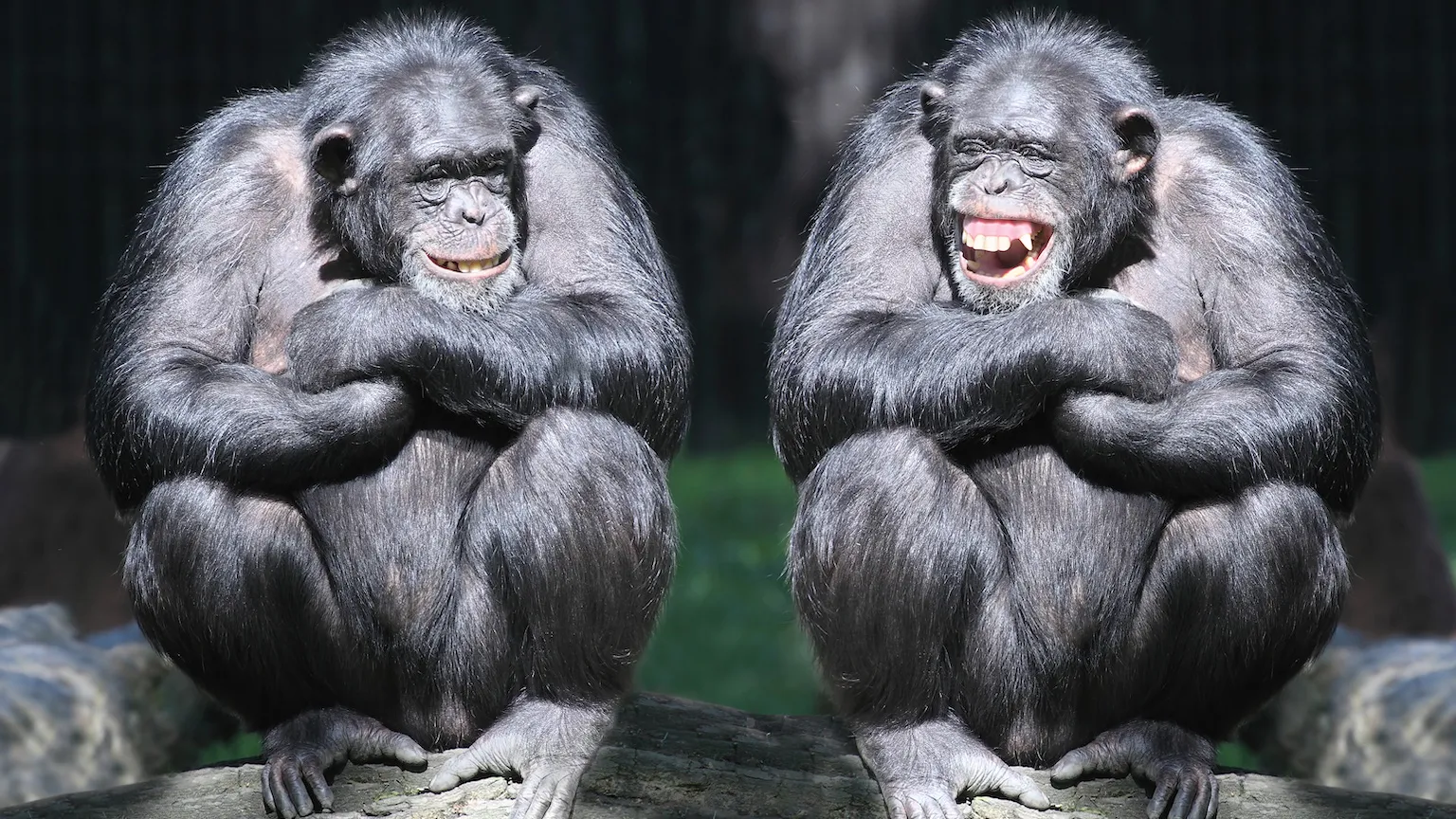Chimpanzees, categorized as great apes, are highly social animals that are native to Africa. Besides the bonobo, they’re our closest living relatives. Humans share more than 90% of our DNA with our primate relatives, and according to BMC Genomics, “The divergence between human and chimpanzee ancestors dates to approximately 6.5-7.5 million years ago.” Despite this, chimps can act more aggressively than humans. They seek revenge, cause injuries, conduct violence within groups, and use sharp tools to kill their prey. Even then, hundreds of studies done over several decades conclude that we can learn a lot more from observing chimps than we think we can.

They Commit Warfare
Even though our closely related relatives might seem relaxed, it doesn’t mean they are all the time. Chimpanzees engage in territorial conflicts with neighboring groups, often resulting in violent, lethal confrontations. This known fact came about in the 1970s when researchers became “aware that male chimps often organize themselves into warring gangs that raid each other’s territory, sometimes leaving mutilated dead bodies on the battlefield.” Some scientists believe this aggression comes from human interference. Because we cut down their land and forests for farming, they become aggressive as an act of defense.
Furthermore, the territorial disputes among chimpanzees reveal intricate social dynamics within their communities. These conflicts are not just random acts of aggression; they serve as a stark reminder of the complex interactions and alliances that exist within chimpanzee societies. In many ways, these confrontations mirror the multifaceted relationships and power struggles that humans experience in their own societies, shedding light on the evolutionary origins of group dynamics and the potential consequences of habitat loss and interference. Understanding these behaviors is crucial not only for the conservation of chimpanzee populations but also for gaining insights into our own species’ history and behavior, as we share a common ancestry with these remarkable creatures. (Science).
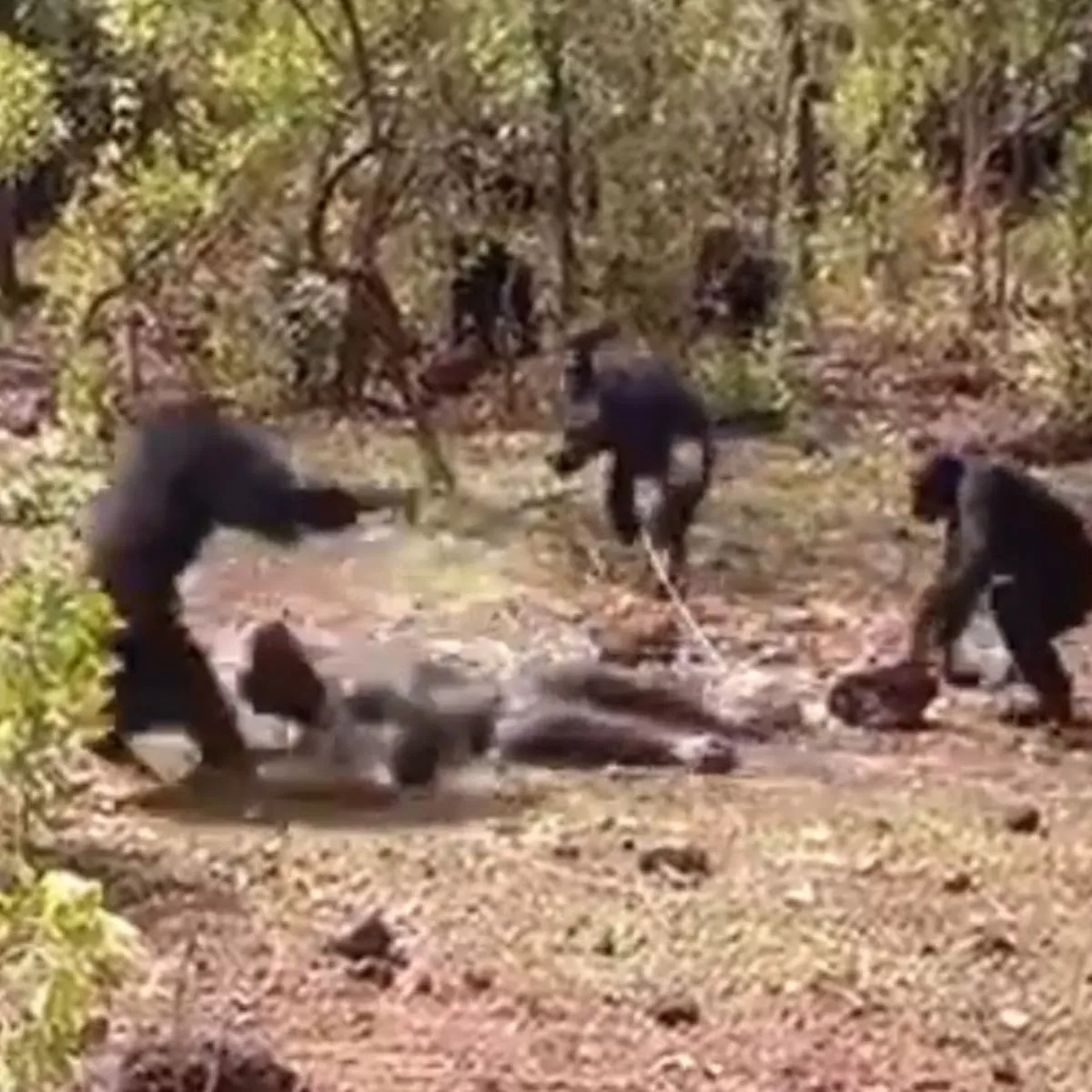
They’re Prone To Cannibalism
While we know cannibalism used to exist among humans, you might be surprised to learn it still exists among chimpanzees. Although it’s rare, it does happen, as chimpanzees have been observed killing and eating the infants of rival chimpanzee groups. They don’t survive on cannibalism alone but use it more as revenge than anything else. Scientists observed the behavior twice among these primates in East Africa.
National Geographic reported a murdered chimpanzee, who was brutally murdered and partially cannibalized by members of his former social group in Senegal. According to the report, “Pruetz and her team watched many of Fongoli’s male and female chimpanzees harass—and partially cannibalize—his body, tearing out his throat and biting at his genitals.” They believe this aggression was more about reproduction than anything else. Primatologist Wilson said, “Intra-group killing looks like it’s really about reproductive competition, [with] males killing other males. The signals of reproductive competition are quite abundant; the killings are just an extreme point.” This violence closely resembles that of humans (National Geographic).
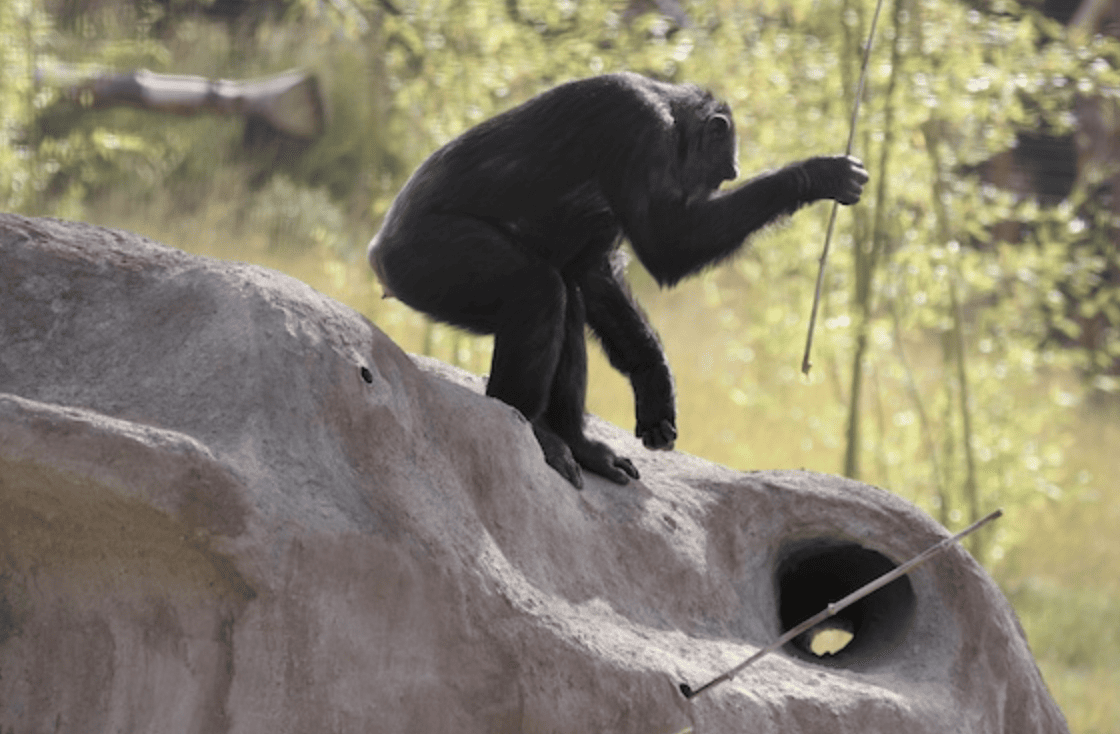
They Use Tools To Kill Prey
Chimpanzees are tactful as in they use tools for various purposes, including hunting and aggression. They can easily grab something to use as a weapon against another chimpanzee or predator. When hunting mammals, they’ll sharpen sticks to act as knives to stab their prey.
Additionally, according to an article published by the University of Cambridge, “On locating an army ant colony, chimpanzees will dig into the nest with the first tool – aggravating the insects. They then dip the second tool into the nest, causing the angry ants to swarm up it. Once the slender shoot is covered in ants, the chimpanzees pull it out and wipe their fingers along it: scooping up the ants until they have a substantial handful that goes straight into the mouth in one deft motion.” This provides them with ample protein, though much to the ant’s dismay (CAM).
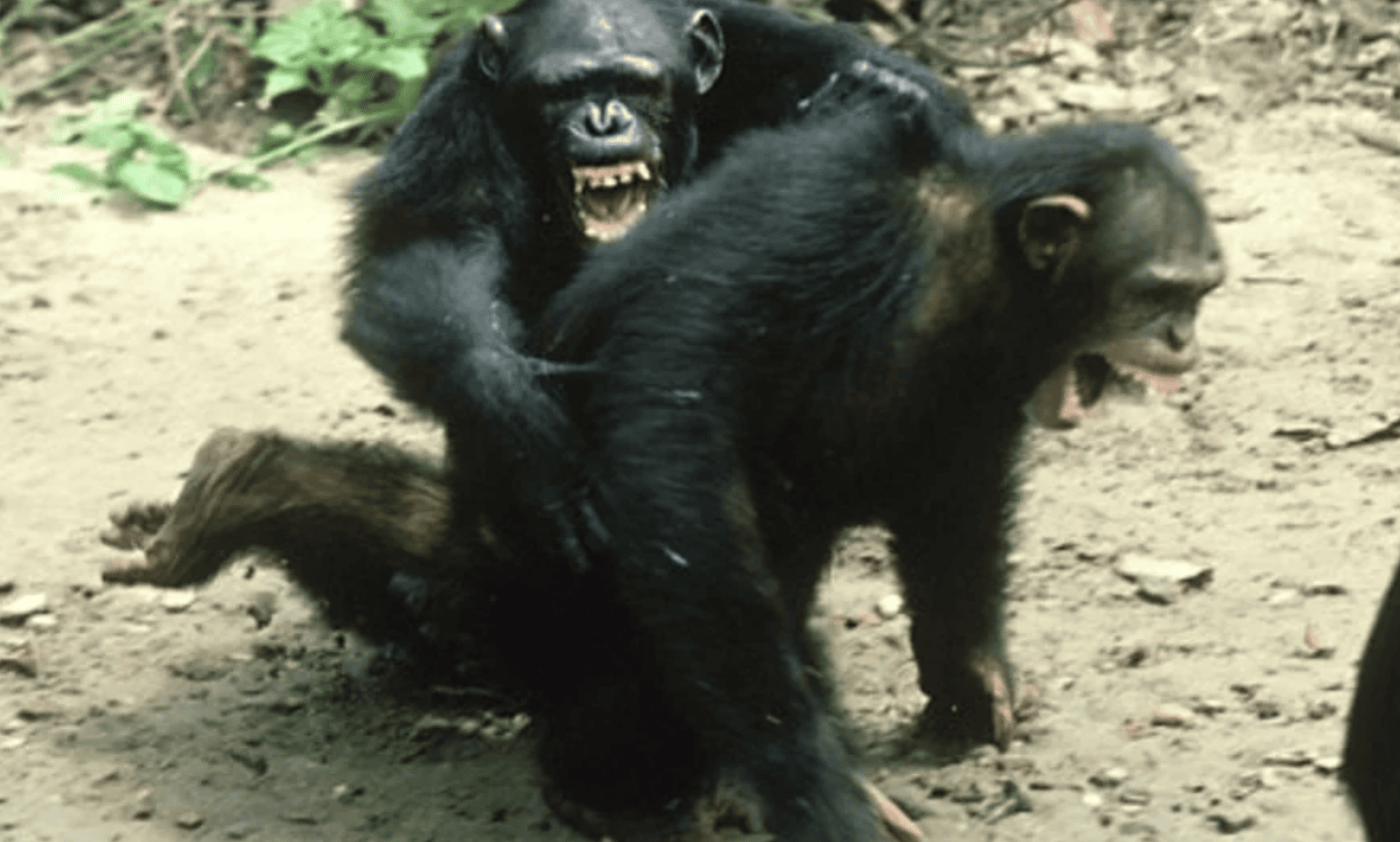
Aggressive And Tactile Hunting Methods
Not only will chimpanzees use tools to kill their prey, but they’ll engage in organized hunting for meat. They often work together to catch and kill monkeys or other small animals, and attack as a group. They’re intelligent when it comes to catching their prey. They’ll use their sharp tools to stab it into bushes of where bush babies may sleep. Men are more likely to attack with their hands, women are more likely to use tools. According to Anthropologist Jill Pruetz, “almost without fail, every time they would withdraw the tool, they would sniff it or lick it, and then proceed to stab it in there again, “And they did it so forcibly that our assumption is the bush babies would have been injured if there were always bush babies in the hollow.”
She also continued to say, “The observation that individuals hunting with tools include females and immature chimpanzees suggests that we should rethink traditional explanations for the evolution of such behavior in our lineage.” This is intellectual complexity on another level, but most likely thanks to their human relatives. Between their strength and weapons, they’re no match for a weaker animal (Reuters).
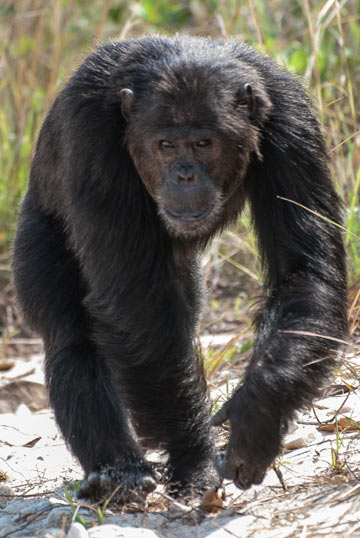
They Exhibit Extreme Tribalism
Chimpanzees don’t necessarily like outsiders. They’re not accepting of other chimps that try to make their way into their group. This is why chimpanzee groups can exhibit strong in-group/out-group biases, which can result in aggression towards outsiders. This sort of tribal violence comes naturally to chimpanzees.
According to Researcher Michael Wilson in an interview with news source Mongabay, “Chimpanzees are highly territorial. When groups of chimpanzees meet, it’s “pretty much always hostile”. Usually, they just holler and posture, he said. But if a large group of males encounters a lone chimpanzee from another community, it can get ugly. They will chase the loner down, pin him, and beat him viciously.” While humans may exhibit similar behaviors, it’s never as gruesome as chimpanzees make it (Mongabay).
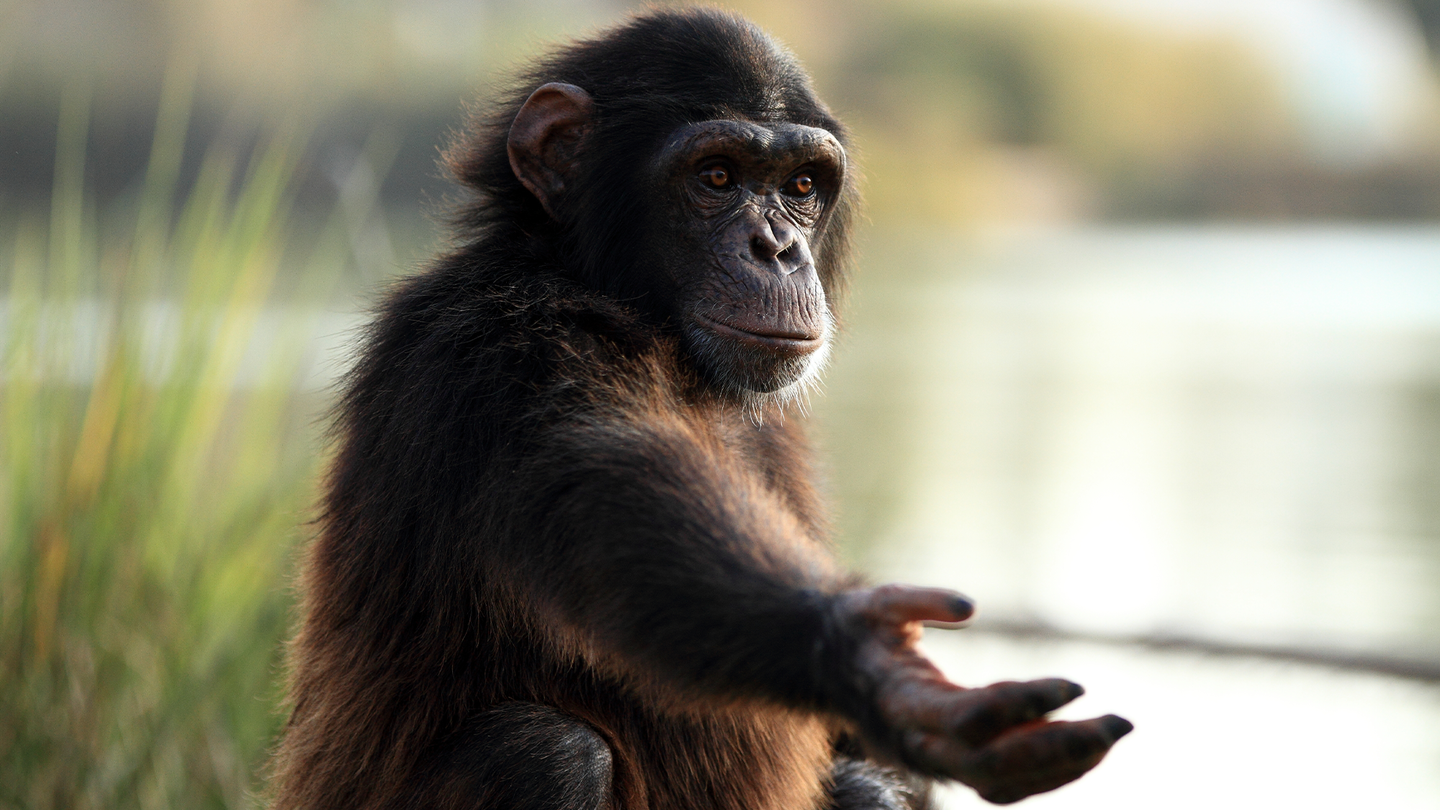
Adolescent Violence
Similar to those angsty teen years, chimpanzees also exhibit aggressive behavior. When they reach adolescent age, they start to challenge the dominant males and can engage in acts of violence. Human teens and chimps exhibit frisky behavior, though chimps might be less impulsive than our human counterparts. During an experiment, both adolescents and adults had to play a gambling game. According to the researchers, “The team recorded the chimpanzees’ vocalizations and emotional reactions, including moans, screams, whimpers, banging on the table, or scratching themselves. To track hormone levels, they also collected saliva samples.” It turns out that adolescents took more of a risk than adults.
This similarity between adolescent chimpanzees and human teenagers in their proclivity for risk-taking is intriguing and underscores the shared biological underpinnings of behavior in these different species. While the behaviors may manifest differently, the underlying factors that drive such actions may have evolutionary roots in common. The experiment conducted on both chimpanzees and humans not only sheds light on the risk preferences of adolescent chimpanzees but also offers a window into the complex interplay of hormones and emotions in their decision-making processes. Understanding these parallel behaviors provides valuable insights into the ways adolescence is a critical period for both species, where individuals explore their boundaries, challenge existing hierarchies, and learn to navigate the intricate social structures that define their respective communities. (Popsci).
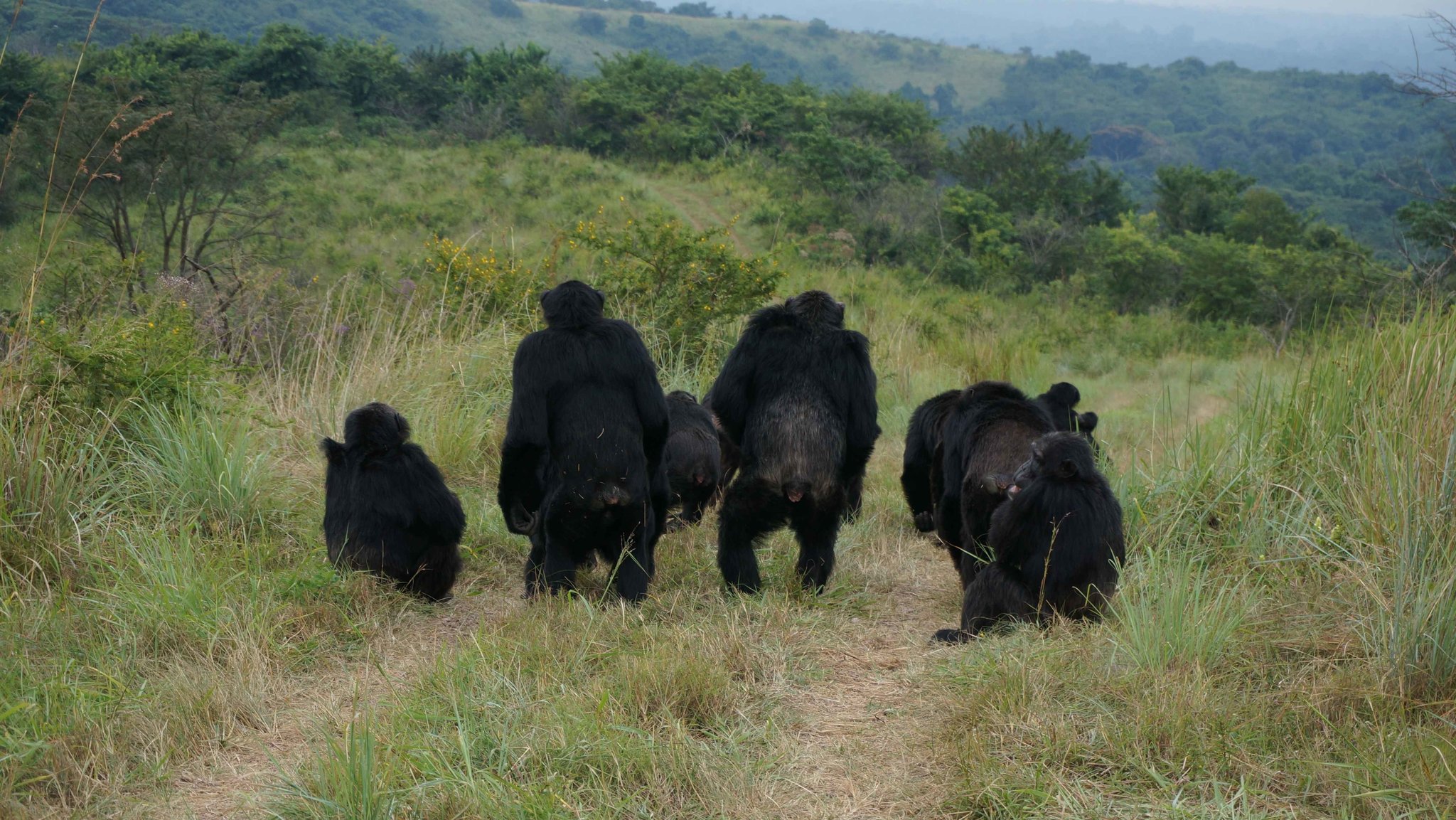
Groups Are Often Rivals Of One Another
To protect their shrewdness, chimpanzees will conduct group violence attacks on rival groups. If it’s a loner, it’s game over for him as we’ve previously seen. If the group encounters a smaller group, they’ll usually always attack. Their territorial behavior also includes patrolling the area and conducting lethal aggression. It’s assumed that the males are defending their female mates. Their aggression is typically correlated with food availability. Males are usually aggressive toward other males and aggressive toward other females who are older or not sexually receptive.
Chimpanzee group dynamics and their use of violence as a means of protection and resource defense are finely tuned to their environment and social structure. The correlation between their aggression and food availability illustrates the profound impact of resource scarcity on their behavior. During times of plenty, tensions might ease, and male aggression could become less frequent. Yet, when resources become scarce, the competition among chimpanzee groups escalates, and it’s not just a matter of male-male aggression. Female chimpanzees, particularly those who are older or not in their receptive phase, also bear the brunt of aggression, highlighting the complex interplay between mating strategies, dominance hierarchies, and the availability of resources. (Science Direct).
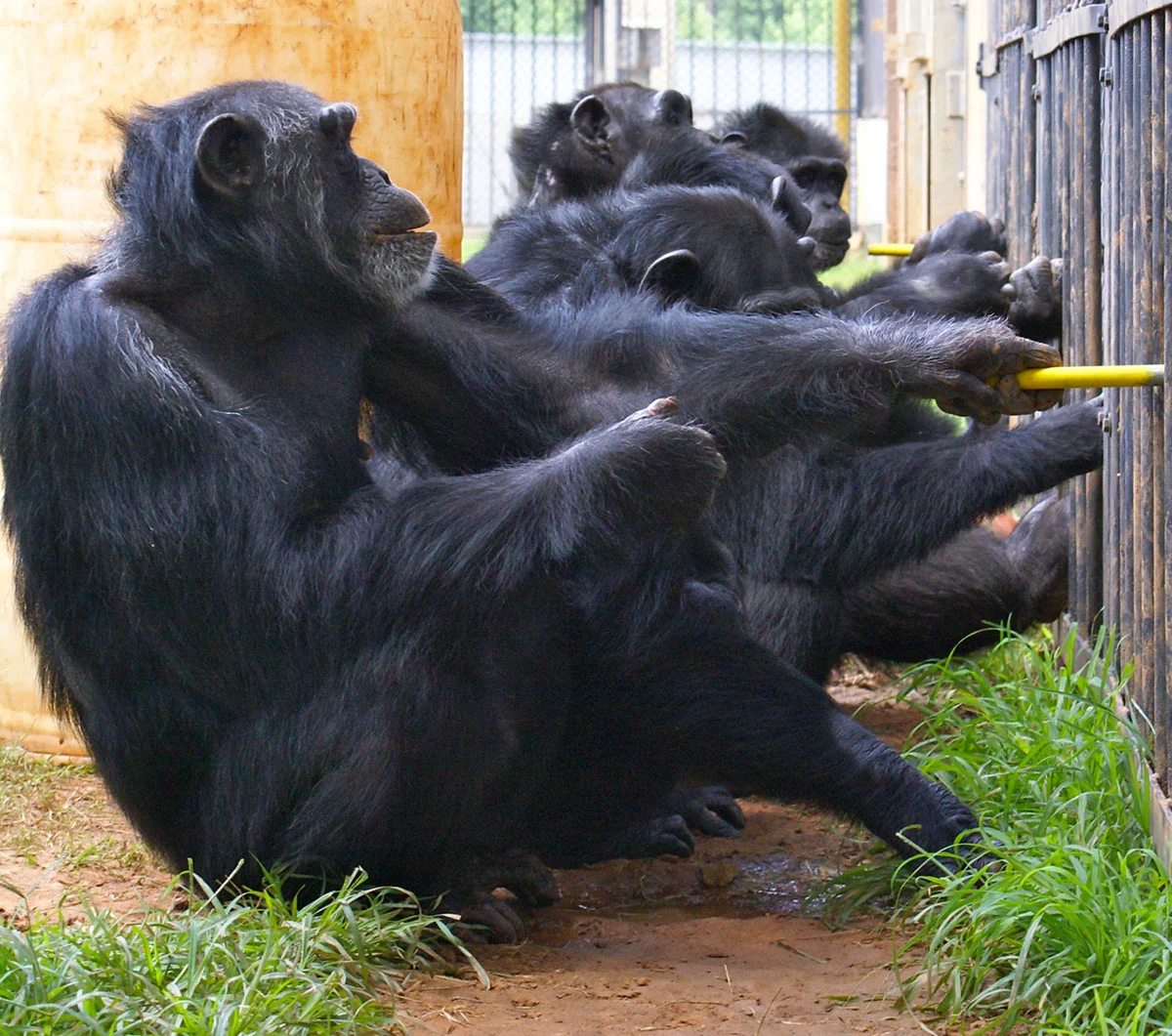
Use Of Punishment And Discipline
To maintain order in the group, chimpanzees may engage in disciplinary acts. Sometimes, this involves physical aggression. They do this to maintain order within the group. According to Anthropologist Katrin Riedl, “chimpanzees will punish individuals who steal food from them, but not those who steal food from others. Even if the victim was a close relative, the third party never sought to punish the thief.” This is different than humans, who punishes to prevent free-riders from taking over.
Chimpanzee disciplinary acts encompass a range of tactics beyond physical aggression, reflecting the complexity of their social organization. One notable tactic is social exclusion, where individuals that breach group norms or engage in aggressive behavior may find themselves isolated from the rest of the community. This form of discipline can serve as a potent means of restoring order, as the excluded individual loses access to essential resources like food and social support. Moreover, grooming and affiliative behaviors, typically acts of bonding and cooperation, can also be employed as a disciplinary tool. Chimpanzees may engage in grooming to reconcile after conflicts, effectively demonstrating their willingness to reintegrate with the group and reestablish social harmony. (National Geographic).
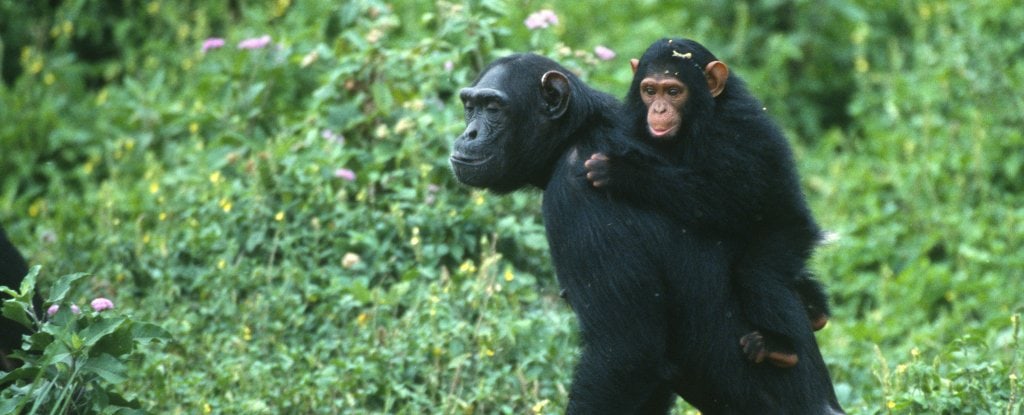
Infanticide
Unfortunately, male chimpanzees have been known to kill the offspring of females who have recently joined their group, to induce the females to mate sooner. They’ll take the offspring away from the female and brutally kill it. They want to continue their race with their DNA and are not afraid to take aggressive, brutal action. But to protect their offspring from infanticide, female chimpanzees have developed an ingenious strategy. According to Science Alert, “The mothers were found to befriend male chimps with a stable high rank during social instability – a powerful maneuver that could potentially ensure the protection of their offspring from another aggressor.” They always say it’s better to become friends with your enemies than not, and these female chimpanzees did just that.
Male chimpanzees may engage in the tragic behavior of killing baby chimpanzees for several reasons. One primary motivation is the pursuit of reproductive advantage. By eliminating nursing infants, males can induce the mothers to become sexually receptive sooner, increasing their chances of mating and passing on their own genes. Additionally, infanticide can serve as a strategy to exert dominance and assert control within the group, a means to eliminate potential rivals or to weaken the social bonds of a rival male. While infanticide is a distressing behavior, it highlights the intricate interplay between reproductive strategies, social dynamics, and power struggles within chimpanzee societies. (Science Alert).

Violence Within Groups
We know that Chimpanzees are violent towards members of other groups, but what about members of their group? They can act aggressively towards members of their group, especially during power struggles or mating disputes. Scientists even believe chimpanzees are more aggressive than humans in certain ways. They typically partake in reactive aggression, but this violence is related to adaptive strategies. Even though they spend most of their time grooming and looking for food, violence does occur.
Chimpanzees may exhibit aggression towards infant chimpanzees for several reasons, including resource competition during times of scarcity, the assertion of social dominance, infanticide as a reproductive strategy, increased stress and social disruption, and the inexperience of younger individuals in the group. Aggression towards infants can serve as a means of ensuring access to limited resources, reinforcing social hierarchies, and potentially enhancing mating opportunities. It’s important to understand that these behaviors are complex and context-dependent, with various factors influencing the interactions and responses within chimpanzee communities. (Jane Goodall).
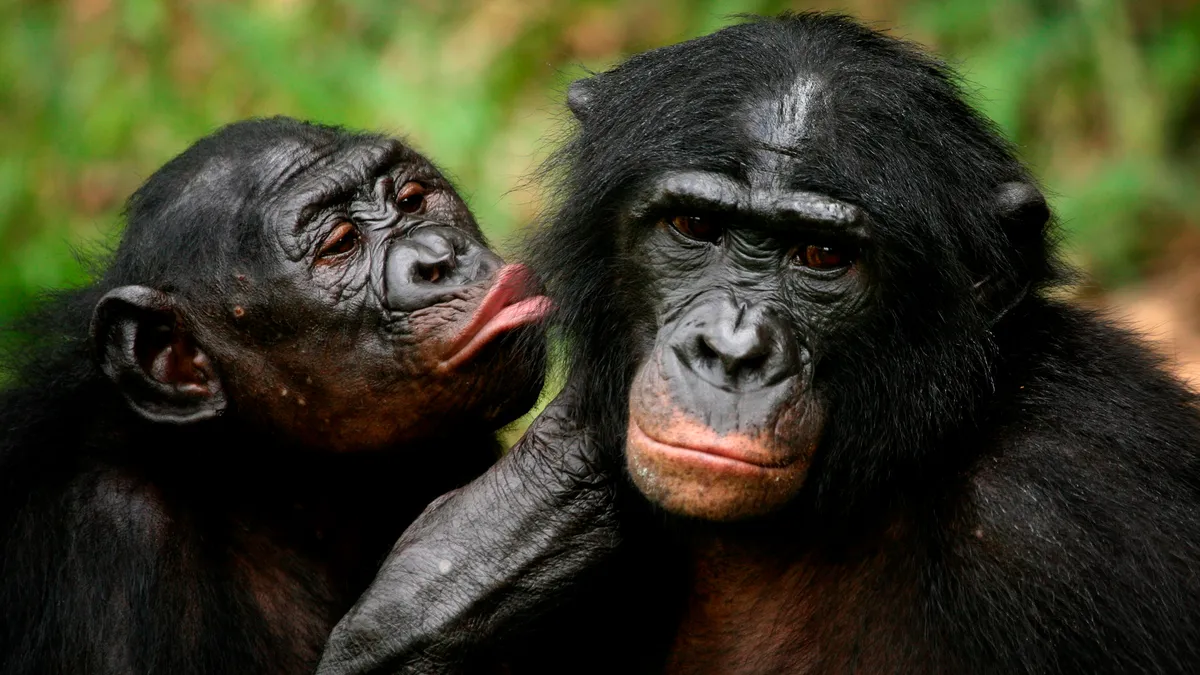
Maternal Aggression
Just like any mother in humans would protect their young, female chimpanzees do the same. When it comes to their offspring’s safety, they can be protective and aggressive. As we’ve seen previously, they’ve developed tactics to prevent infanticide, but they’ve also learned how to fight back. Scientists also discovered chimpanzees without mothers are more aggressive than those with mothers. Researcher Edwin van Leeuwen said, “Orphaned chimpanzees had more difficulties to successfully coordinate their social play interactions. The chimps in the study were between four and nine years old, so they have kind of been raising each other.”
(Non Human Rights).
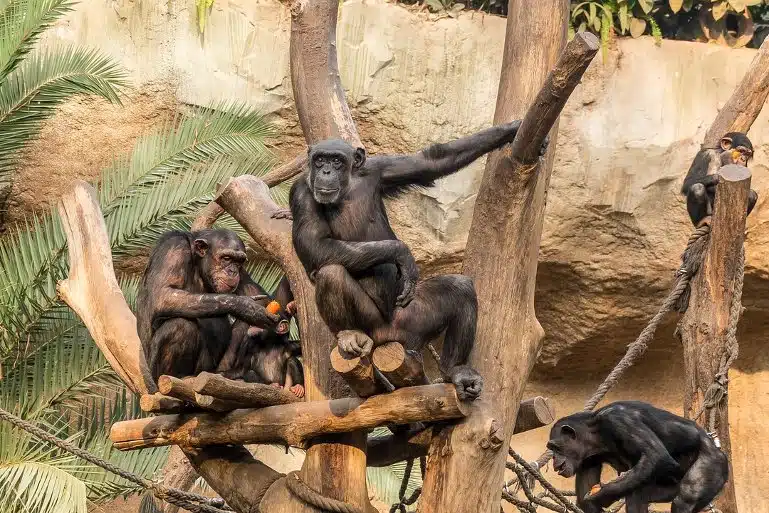
Bullying
It may come as no surprise that chimpanzees are some of the worst bullies out there. Dominant chimpanzees may engage in aggressive bullying behaviors towards subordinates. They do this by stealing their food or displacing them from desirable spots. It may even get to the point where they’re physically bullying them. A study revealed that chimpanzees who bully are more likely to climb the social ladder than their nicer counterparts. Brutish, aggressive behavior paves the way to power and leadership. This peak, which occurs earlier in life, seems to be beneficial to males.
Within chimpanzee communities, the dynamics of dominance and aggression can be striking. It’s not uncommon for dominant individuals to engage in bullying behaviors towards their subordinates, creating a hierarchy where might often makes right. This bullying takes various forms, from food theft to physical displacement from coveted spots. Surprisingly, a study has revealed that these brutish tactics often pay off. Chimpanzees who resort to bullying are more likely to climb the social ladder and assert their leadership within the group, particularly among males. This early ascent to power can offer strategic advantages, including increased access to mates and valuable resources. (Neuroscience News).
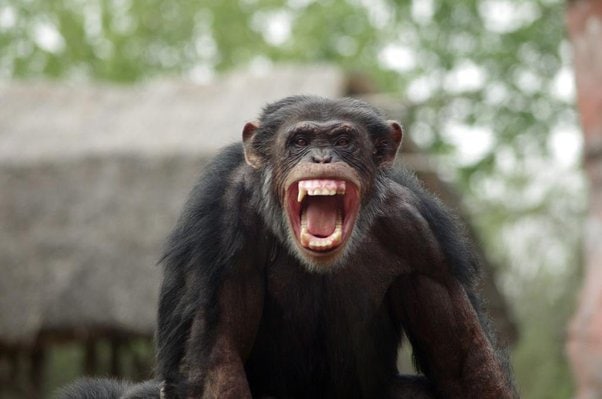
They’re Manipulative, Aggressive, Hostile, And Portray Antagonistic Behaviors
Because alpha males exist in the world of chimpanzees, they can become extremely hostile when trying to maintain their position. They’ll also conduct dominance rituals, charging, and screaming, oftentimes working together to achieve their aggressive goals by taking down a leader or rival. They’ve even taken over and eaten their tyrannical leaders, as we’ve seen with their cannibalism potential. Not only will they kill a member of their community, but they’ll go on to abuse it. They’ll even go on to conduct social manipulation and use social strategies to manipulate others. This often forms alliances and causes them to engage in deceptive behaviors, turning against each other’s backs.
Within chimpanzee societies, the concept of alpha males reigns supreme, and the lengths they go to in order to maintain their position can be nothing short of astonishing. The struggle for dominance often unfolds as a relentless battle characterized by aggressive displays, intense dominance rituals, and coordinated efforts. These efforts sometimes involve charging and vocalizations, all aimed at toppling the current leader or rival. Perhaps most remarkably, there have been instances where these power dynamics took a chilling turn, resulting in acts of cannibalism. In these cases, not only do they take down a dominant leader, but they consume the remains, a testament to the extremities that their quest for dominance can reach. Beyond these gruesome spectacles, chimpanzees exhibit an array of intricate social manipulation tactics and strategic behaviors. (Independent).
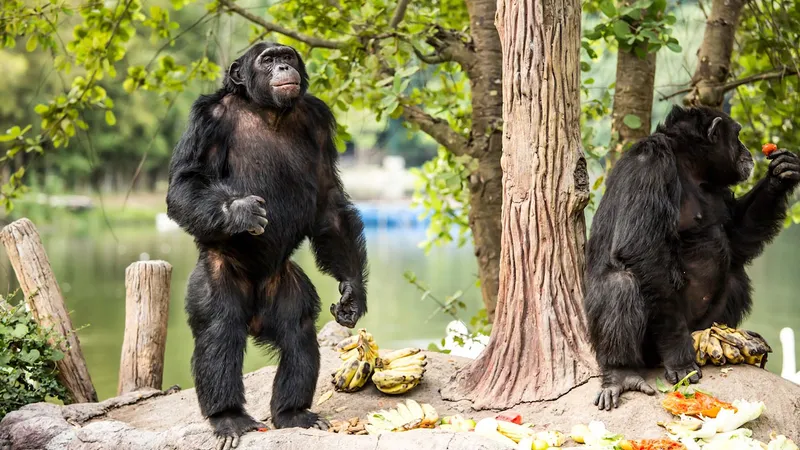
They Get Mad, And They Get Even
Not only can something anger a chimp, but they can decide to get even. This is called retaliatory violence when chimpanzees engage in retaliatory actions against individuals who have harmed them or their allies. They seek revenge on people who have done them, or their friends, wrong. You wouldn’t want to mess with an angry chimp seeking revenge. According to an article written by NIH, “If punitive action deters others from taking their food or stealing their mates, then the direct benefits derived from punitive sanctions may outweigh the costs.” If risking an attack on someone is worth the risk, then the chimp will likely go through with it.
he concept of retaliatory violence among chimpanzees offers a striking insight into the depth of their social cognition and the complex motivations that drive their behavior. Much like humans, who may seek retribution when wronged, chimpanzees appear capable of harboring a sense of injustice and taking action to right perceived wrongs. This behavior demonstrates a level of strategic thinking and the ability to weigh potential risks against the benefits of retribution. The idea that punitive action can act as a deterrent within their social structure suggests that chimpanzees have a sophisticated understanding of the consequences of their actions and the potential impact on their status, resources, or alliances. It underscores the importance of not underestimating the cognitive capabilities of our closest living relatives and the intricate nature of their interactions.(NCBI).
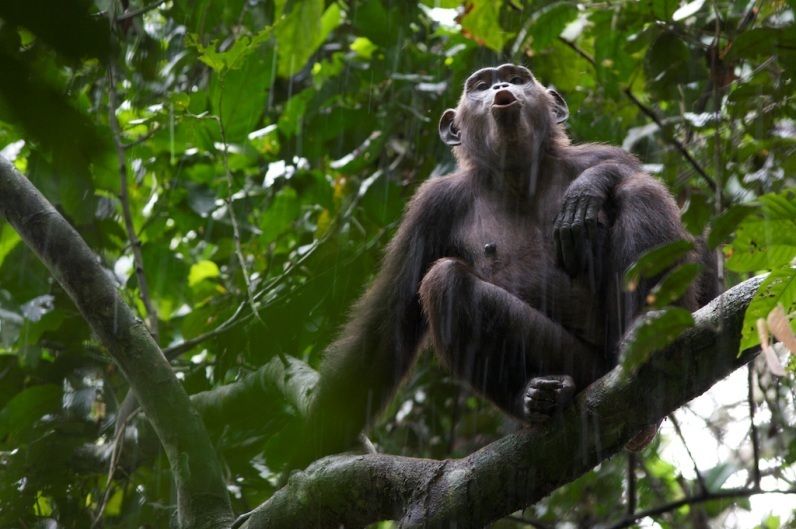
Females May Be As Aggressive As Males
We know females can show aggression when protecting their young, but they can also show aggression when competing for food or resources. It’s even more so when the female chimps are stressed, and they may kill their enemies young. Given the right set of circumstances, we can see females as equally aggressive as males. And when they’re stressed for food and resources, any new female is competition. They’ll kill infants, though it takes more than one female to kill off the infant.
While the nurturing and protective side of female chimps is evident when it comes to safeguarding their offspring, the competitive nature of their interactions becomes increasingly pronounced, especially in times of stress or scarcity. The fierce competition for food and resources can escalate, with female chimps displaying remarkable aggression not only towards rival groups but also towards their fellow females. This aggression may extend to the point of infanticide, a distressing behavior that, as mentioned, often involves multiple females. (New Scientist).
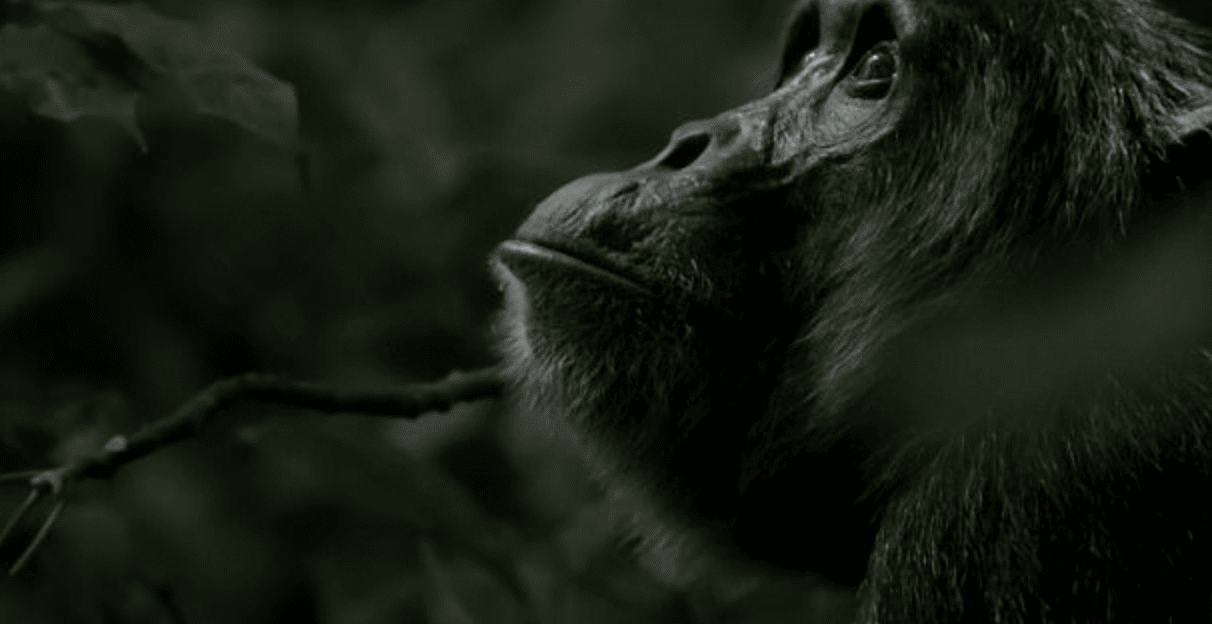
Patrols And Boundary Enforcement
Male chimps will protect their territory, and anything getting in the way is seen as a major threat. Chimpanzee males conduct regular boundary patrols, and encounters with rival groups can escalate into violence. By working together, they’re better able to protect their territory. They’ll sniff the ground, listen for sounds, and make sure they’re well aware of their surroundings. During this patrol, about ten percent turn into violent fights, where they hold down their victims, kick, and stomp on them. They do this to have a territory rich with food, longer lives, and more females.
Researchers in Uganda studied this boundary enforcement. They concluded, “Patrolling may give the Ngogo chimps in Kibale National Park a leg up on the competition, the researchers explain, as this group has been found to benefit from long life expectancies, massive territory, and unusually bountiful food supply. This behavior, though, is dangerous, and often leads to violent spats with members of other communities.” This enforcement is one of the most dramatic forms of collective action we see in mammals (Daily Mail).

They Form Grooming Alliances
No one likes favoritism. It makes people feel rejected, and like they’re not part of a community. But chimps form these sorts of grooming alliances to help reduce aggression, though it unfortunately leads to favoritism and manipulation. If one chimp is grooming another, and a chimp of a higher ranking arrives, that chimp will abandon the lesser chimp to groom the one of higher ranking. They use grooming as a way to reduce stress and remove parasites, though it can sometimes come with a cost.
A study published in the Animal Behavior journal said, “The extreme degree of structural despotism shown by the males of the Sonso community during this study appeared to have a strong influence on grooming investment strategies. Such conditions reflect marked rank differences and the degree to which rank-related commodities such as agonistic support or tolerance are restricted to high-ranked individuals. In contrast to our findings for the substantially more structurally egalitarian M-group, the influence of bystanders on the grooming strategies of Sonso community males was mediated by a strong effect of dominance rank.” In this case, you wouldn’t want to be a chimp of a lower ranking. It pays off to be a highly respected chimp (Daily Mail).
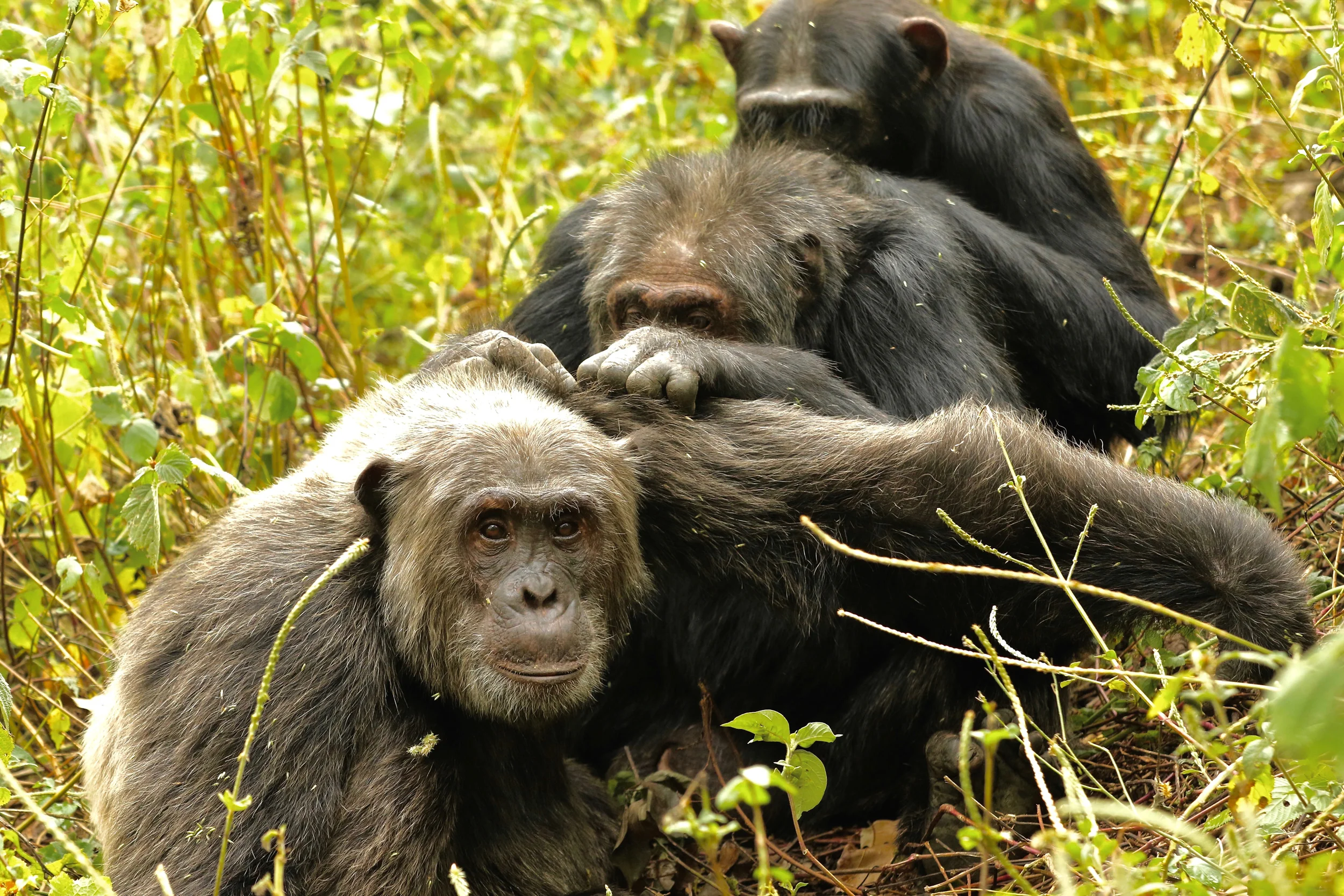
Intergenerational Conflict
Unlike the generation relationships in humans, where the older and younger generations tend to live in symbiosis, chimps have more aggressive behaviors toward each other. Older females may be aggressive towards younger ones in competition for resources and mating opportunities. Males will also compete with each other, as we’ve seen earlier. Chimpanzee societies often exhibit a hierarchical structure, and the older, more experienced individuals tend to hold positions of authority and influence.
The older chimpanzees, especially the dominant males and females, guide the group’s activities, decision-making, and resource distribution. Younger chimpanzees, particularly adolescents, are typically subordinate and go through a learning phase where they observe and imitate the behavior of older, more experienced members. This age-based hierarchy not only ensures the group’s stability but also contributes to the transfer of essential knowledge, cultural practices, and social norms from one generation to the next. Moreover, the older individuals often act as peacemakers, mediating conflicts and promoting group cohesion. Age, therefore, acts as a critical factor in maintaining the social fabric and overall functioning of chimpanzee communities.
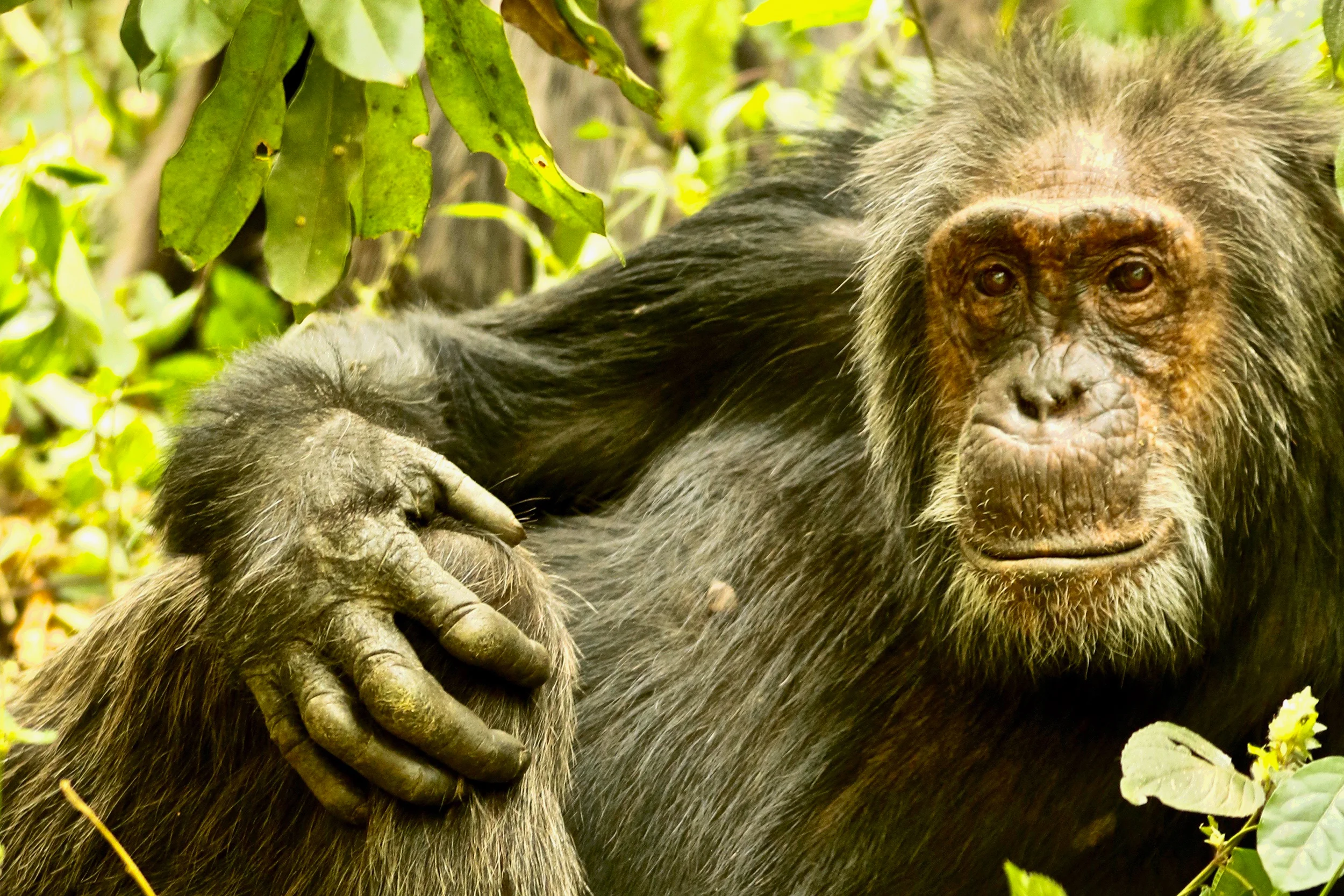
Aging Chimps Behavior Models The Way Humans Age
After 78,000 hours of observation in Kibale National Park in Uganda, scientists realized major differences between aging chimps and younger ones. A study conducted by NIH said, “Aging male chimpanzees have more mutual friendships characterized by high, equitable investment, whereas younger males have more one-sided relationships. Older males are more likely to be alone but socialize more with important social partners.” This may not be surprising, considering older chimps have been around much longer than their younger counterparts.
They also show positivity bias, meaning older chimps have more positive interactions as opposed to aggressive ones. Scientist Alexandra Rosati noted, “The cool thing is that we found that chimpanzees are showing these patterns that mirror those of humans. There’s a pressing need to understand the biology of aging. More humans are living longer than in the past, which can change the dynamics of aging.” Interestingly, even though chimps are smart, they don’t realize they’re going to die, unlike humans, which makes their behavior that much more fascinating, meaning something else might be going on. One theory is this came from evolutionary behavior, dating back thousands of years (Harvard).

